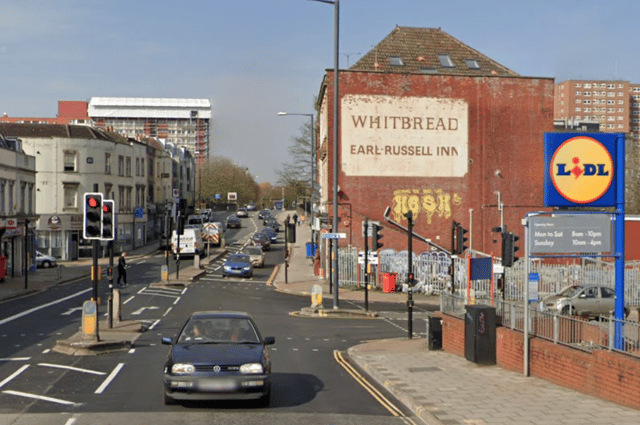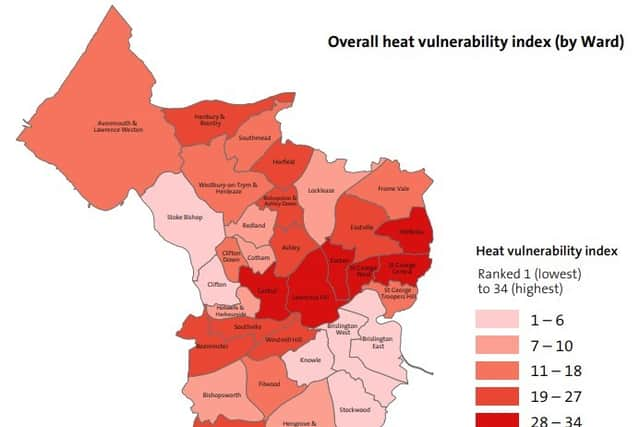The five areas of Bristol most at risk from extreme heatwaves due to climate change


Five parts of Bristol have been identified as the most at risk from extreme heatwaves as global temperatures rise.
City Hall bosses are now preparing a range of adaptations to make Bristol more resilient to hotter summers including planting trees along roads.
Advertisement
Hide AdAdvertisement
Hide AdLawrence Hill residents are most at risk from extreme heat, according to Bristol City Council’s new Keeping Bristol Cool policy.
This is due to the high number of flats, deprivation, lack of green space and the fact the area is low-lying and in the east of the city.
Easton, St George, central Bristol and Hillfields were also identified as the areas next most at risk. During a cabinet meeting, council bosses said average summer temperatures in Bristol could increase by seven degrees by the 2080s.
Labour Councillor Kye Dudd, cabinet member for climate, said: “Last year was the hottest year in the UK on record. We had temperatures reaching 40 degrees for the first time, and this led to there being the highest number of heat-related deaths on record.
Advertisement
Hide AdAdvertisement
Hide Ad“This year so far has seen the hottest June on record and also we had the September heatwave, where for the first time in that part of the year there were seven consecutive days where the temperature reached at least 30 degrees. Quite clearly our climate is changing, and we need to protect people in the city.”
Across the five spells of hot weather in summer last year, there were 2,803 excess deaths for people aged 65 or over, excluding Covid-19, in England according to the UK Health Security Agency. Extreme heat also led to railways buckling and roads melting, while leaves on trees turned brown and yellow and began to fall in August.


The plans to keep Bristol cool include planting many more trees; making sure care homes, council housing and offices can stay cool during heatwaves; and creating more shaded walkways and river paths. But there is little available space on pavements for planting more trees, partly due to utilities, so they could be planted in space currently used for cars instead.
Labour Cllr Don Alexander, cabinet member for transport, said: “The challenge is that streets are used for an awful lot of things at the moment. There’s a lot of different modes of transport, people want to sit down, there are bus stops, and that’s just above ground. Then you come underground, and everything happens under there.
Advertisement
Hide AdAdvertisement
Hide Ad“The water comes in, it goes out, the electric, the internet, you name it. What’s shocking is just how few trees you can actually get in the traditional place where you expect trees to be — that’s on the pavement. Most of our pavements are taken up with utilities that are very, very expensive to move.
“So the truth is a lot of these street trees are going to go in the carriageway. And that’s when it becomes political, because that’s when they are actually competing with car parking and other things that people want to do in the carriageway. But just to warn you, this is going to become political. We have to be quite clear about the importance of greening our streets, quite clear that there will be a cost to it in terms of changes in our lifestyle.”
Central and eastern parts of Bristol are more likely to see higher temperatures than north-western or southern parts of the city. This is due to more hard surfacing in these areas, which are further away from the cooling effect of coastal sea breezes.
Prevailing westerly winds can transport heat from the urban island effect in the centre to the east of the city. Areas at a higher elevation, in the hillier north-west and southern parts of Bristol, are generally cooler than central or eastern parts.
Comment Guidelines
National World encourages reader discussion on our stories. User feedback, insights and back-and-forth exchanges add a rich layer of context to reporting. Please review our Community Guidelines before commenting.